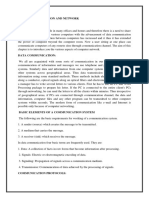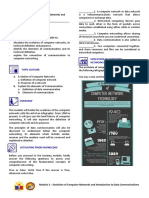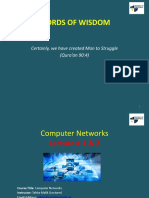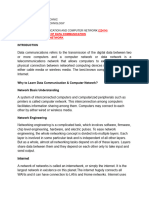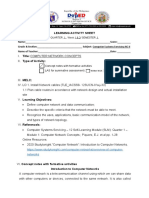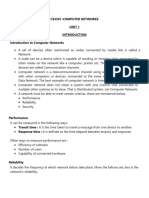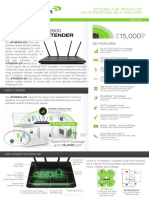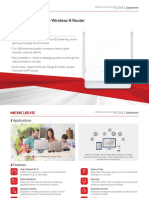0% found this document useful (0 votes)
13 views5 pagesComputer Network
A computer network is a collection of interconnected devices that share resources and information, essential for modern communication and business operations. Data communication refers to the transfer of data between devices, utilizing various mediums and protocols to ensure efficient and secure transmission. Understanding computer networks and data communication is crucial in today's digital world, as they underpin the functionality of the internet and support numerous applications.
Uploaded by
zjiyavudeenCopyright
© © All Rights Reserved
We take content rights seriously. If you suspect this is your content, claim it here.
Available Formats
Download as DOCX, PDF, TXT or read online on Scribd
0% found this document useful (0 votes)
13 views5 pagesComputer Network
A computer network is a collection of interconnected devices that share resources and information, essential for modern communication and business operations. Data communication refers to the transfer of data between devices, utilizing various mediums and protocols to ensure efficient and secure transmission. Understanding computer networks and data communication is crucial in today's digital world, as they underpin the functionality of the internet and support numerous applications.
Uploaded by
zjiyavudeenCopyright
© © All Rights Reserved
We take content rights seriously. If you suspect this is your content, claim it here.
Available Formats
Download as DOCX, PDF, TXT or read online on Scribd
/ 5

